Runaway Cable Car
The worst accident in San Francisco cable car history.
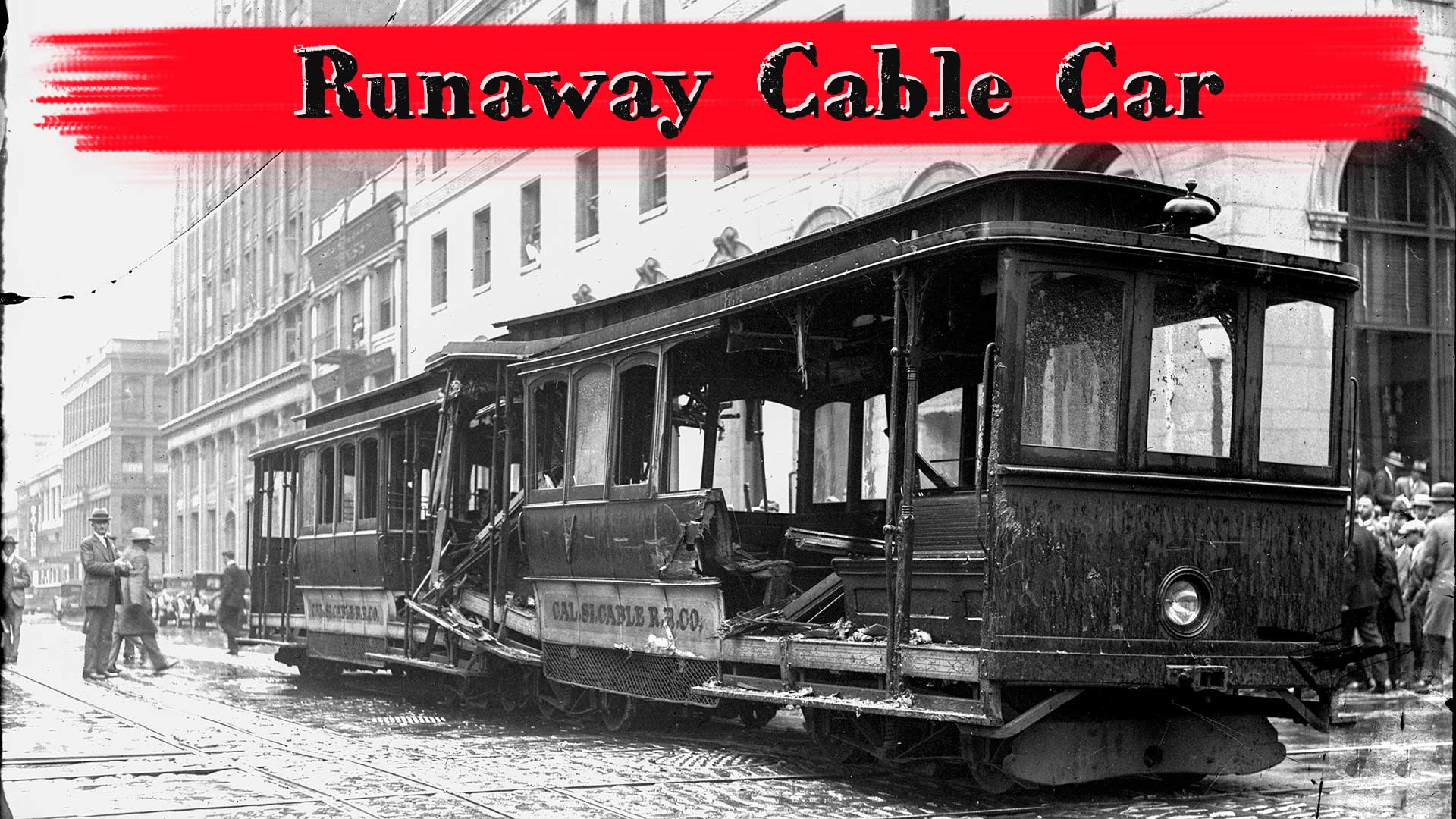
I’ve been riding the California cable car fairly frequently these days. The line’s terminus at Van Ness Avenue is just a few blocks from my office in the Haas-Lilienthal House so it’s a great way to get to meetings in the Financial District.
Almost every seat is free for the choosing when you’re headed east on a weekday. As a local, I usually sit inside so as to give visitors unobstructed camera angles and the treat of hanging from a pole. We San Franciscans are generous like that.
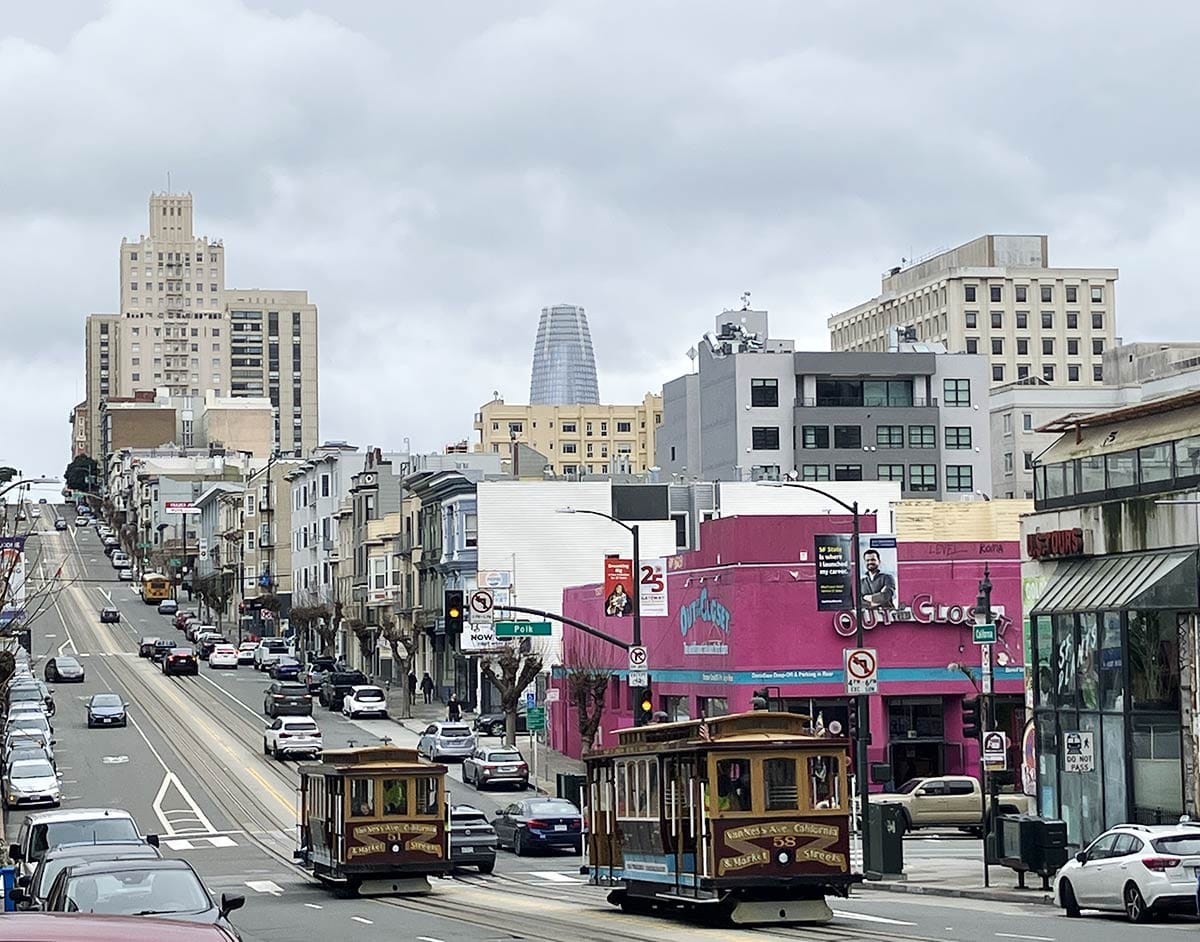
With the tourists who ask, I’m also very generous with identifications (“that’s a private club, used to be the Flood Mansion”), recommendations (“the cable car museum is worth a visit!”), and telling them when to disembark to transfer onto the Powell car for Fisherman’s Wharf or at Grant Street for Chinatown.
These are the pleasant duties vested in being a citizen of the greatest city in the world. We San Franciscans have our job to do, right?
But even with the chattiest visitor, I don’t share what I usually think about going downhill between Powell and Stockton Streets, when gravity has everyone leaning. Especially on heavy-fog or rainy days when the rails are wet.
“These brakes. These brakes.”
On May 7, 1926, Miss Alice Gilbride left her apartment at 1492 California Street and caught California Street cable car #16 at the corner of Larkin Street. She was on her way to her bookkeeper job at the Liverpool & London Insurance Company at 444 California Street. It was a crowded car but she got lucky, securing a seat at the front beside the gripman.
A cloud burst showered the streets with rain just as the cable car passed the Fairmont Hotel at Mason Street and began its descent down to the Ferry Building. Gilbride heard gripman Isadore Navarro start muttering “These brakes. These brakes.”
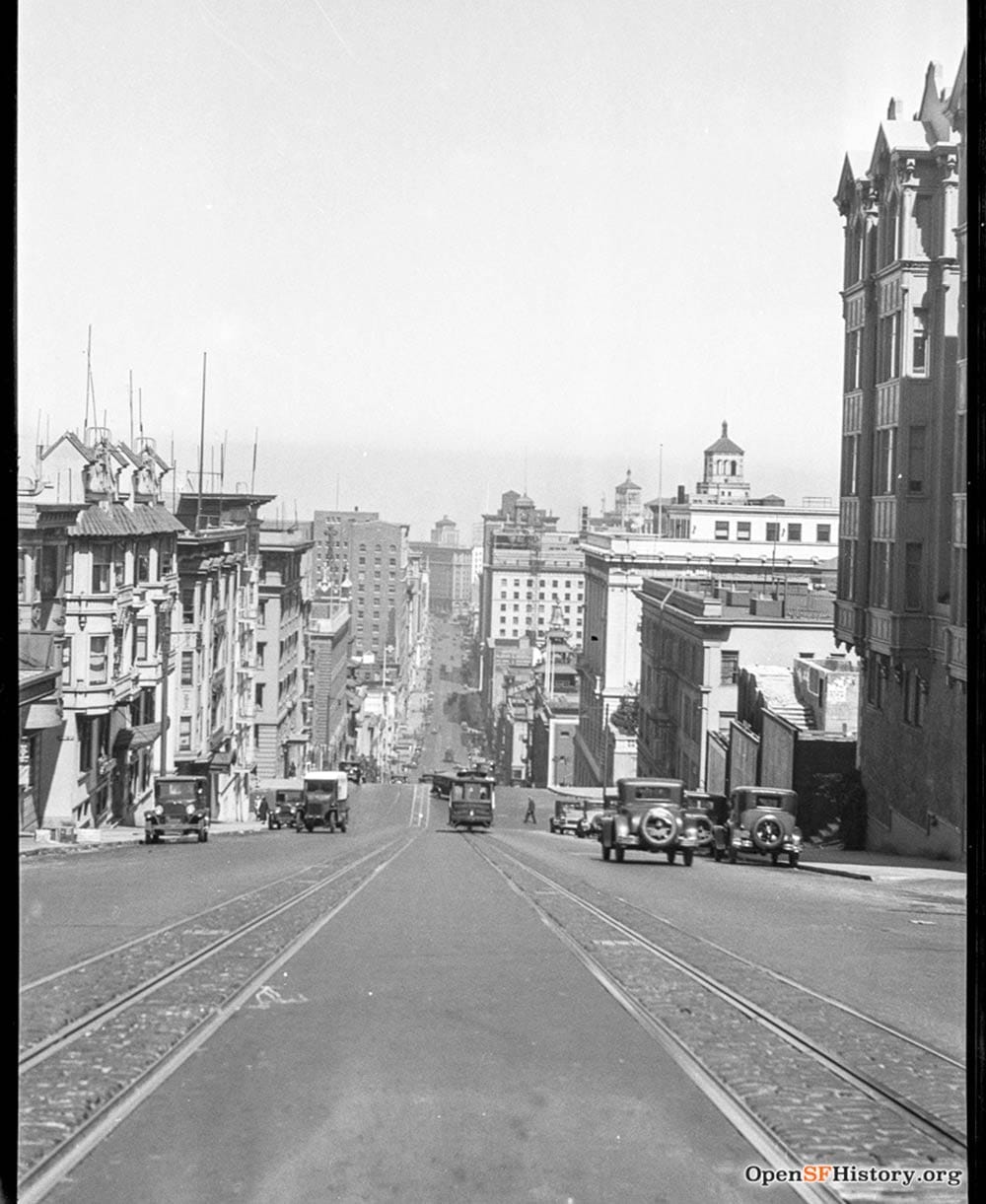
It was a little before 9:00 a.m., the start of the workday. The streets were buzzing with people who were hustling up and down and across California Street on their way to the offices of shipping lines, banks, and insurance companies in the Financial District.
On packed cable car #16, Gilbride and more than a hundred secretaries, office boys, stenographers, commercial agents, and businessmen started to feel something was wrong at Powell Street. The gripman tried to brake on the down-slope, but the car kept moving on the wet and greasy rails.
Then Navarro rang his bell three times—an emergency signal to conductor Clinton Toy to apply brakes in the rear.
At Stockton Street, “[t]he car shot forward and seemed to almost sail through the air.” Halfway down the block, as momentum increased, men started jumping off the running boards, trying their luck with the pavement rather than stay aboard.
Gripman Navarro yelled for passengers to keep with the car as he and conductor Toy kept trying the brakes. People started screaming as two automobiles were side-swiped and car #16 leapt through the intersection of Grant Street.
“As far from assistance as though they had been cut adrift at sea, men groaned, women screamed, gripman and conductor tugged futilely at brakes,” the Chronicle wrote the next day.
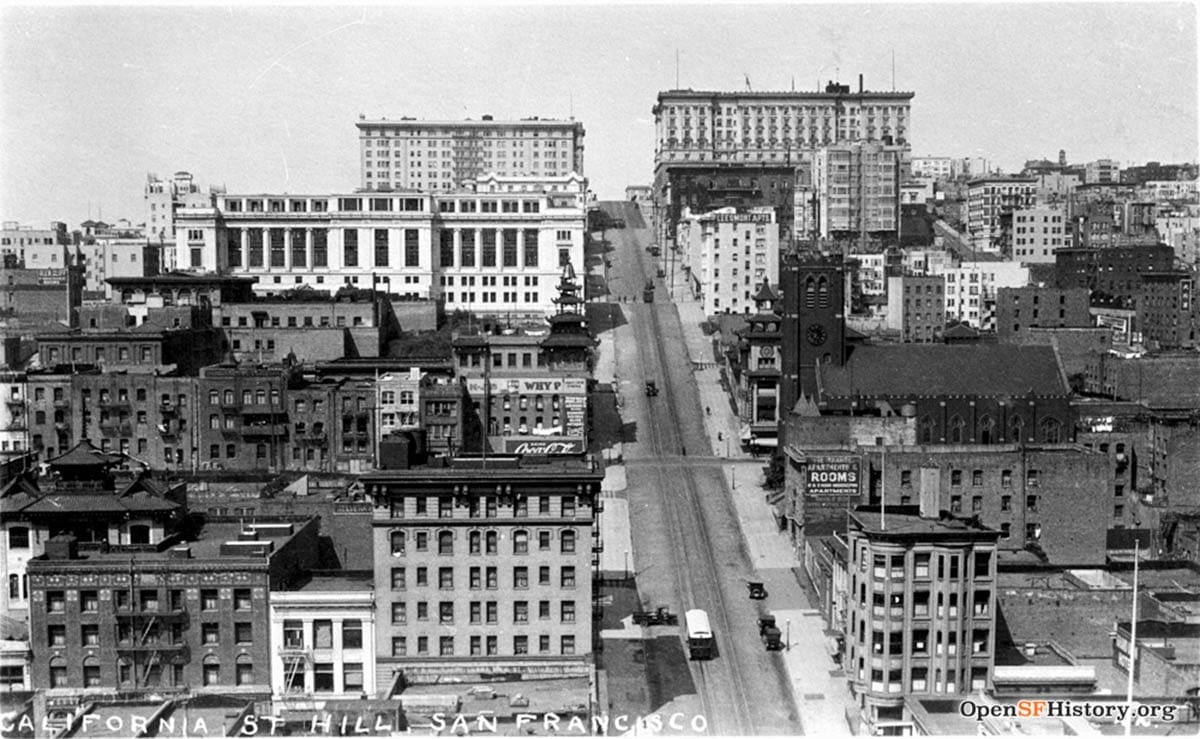
A coupe and a large motor truck of the Union Products Company were crossing at Kearny Street. William “Big Bill” Larue, a former heavyweight boxer clinging to a pole at the front of the cable car, made a decision .
“‘I’ll get off here,’ said Bill to himself. And he did,” wrote a Bulletin reporter. “But he didn’t stop until he had slid across the street. It was a good, solid bump, but Larue had taken worse socks in the ring.”
The coupe wouldn't be as lucky as Larue. The cable car clipped its rear and sent it careening through a window of a tailor shop at the corner. Then car #16 smashed the truck.
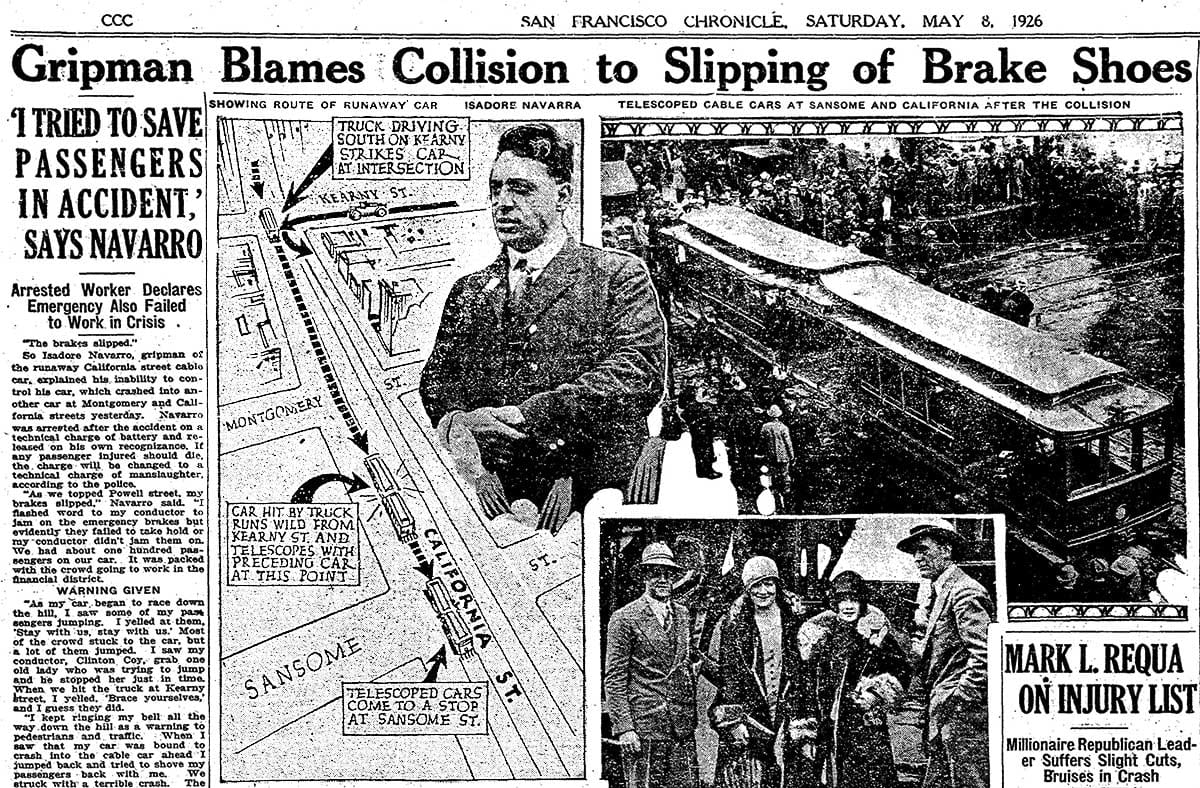
“The women on the car screamed shrilly when they saw that the truck was to be hit. The driver turned, but he was too late, and in a flash the truck was demolished, the side of the cable car bashed in…”
The “products” which Union Products dealt in were animal carcasses bound for tallow rendering. On collision, the cable car passengers “were sprayed with meat scraps.”
The truck strewing entrails and flesh behind it catapulted into a parked car and then through the front windows of the grossly if appropriately named Raw Food Dining Room at 574 California Street.
“The car simply would not stop. I yelled to the passengers: ‘Get back, get in back of the car!’”
Onward down the hill the bloody and bashed cable car hurtled. “The car simply would not stop. I yelled to the passengers: ‘Get back, get in back of the car!’” Navarro said later.
He rang his bell madly. Toy restrained a woman trying to jump. Alice Gilbride wrapped her arms around the neck of a strange man to keep from being being thrown. The next disaster waited just ahead at Montgomery Street. There, stopped on the tracks, was another cable car.
Matt O’Connor, conductor of car #17, saw what was coming. He hustled passengers off the back of the car, yelling “Jump for your lives!”
Navarro: “In another instant we were upon them.”
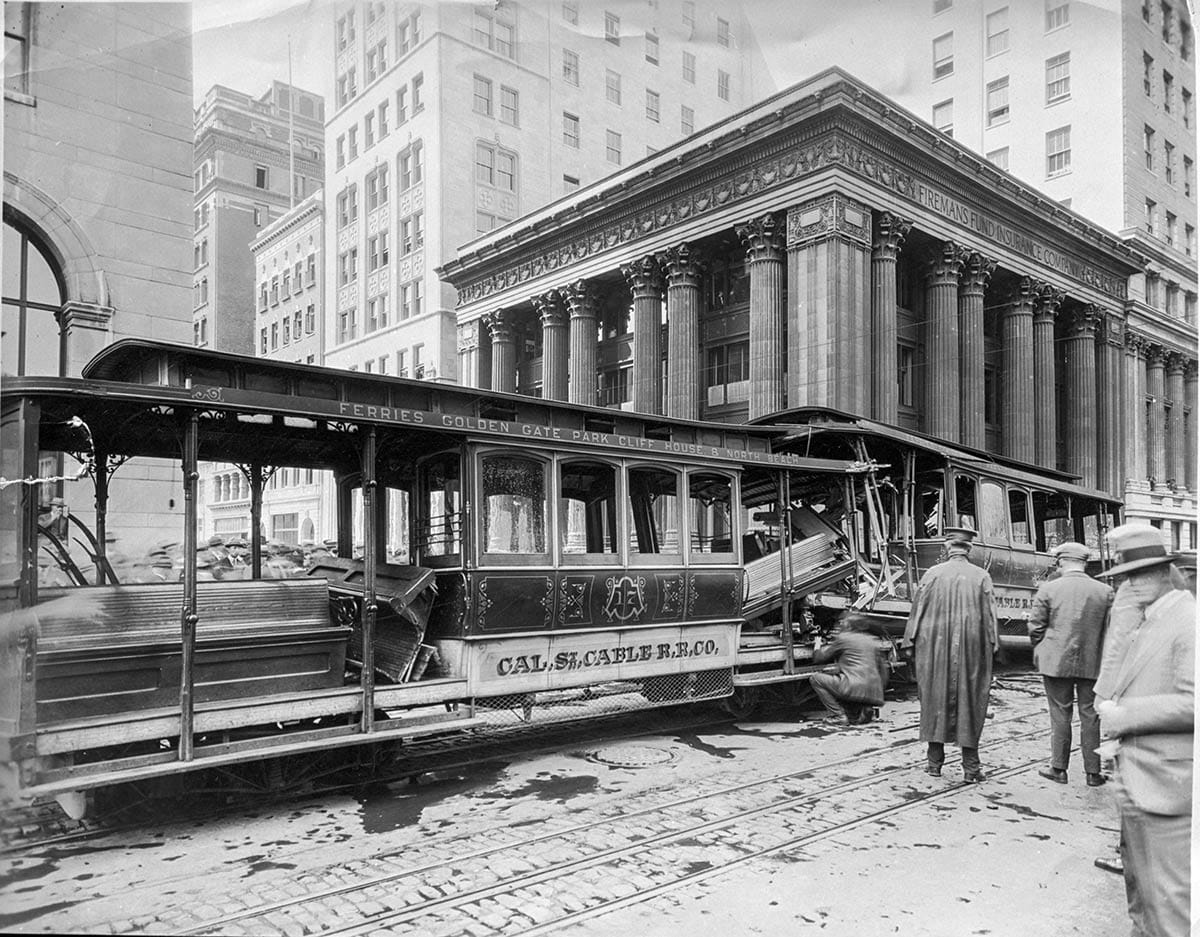
The dented runaway, covered in dead-animal bits and still full of passengers, rammed and telescoped into the end of its sister car.
“There was a shattering of glass and rending of steel and wood. Seats were twisted free from their fastenings.” Conjoined, the cars continued to the intersection of Sansome and California streets before grinding to a stop.
Passengers on both cars had been tossed into the street, including conductor Toy. Others were trapped in a bloody briar of mangled wood and iron, including gripman Navarro, who was dazed, but found to be mostly unhurt when freed.
The Chronicle noted that “flesh from the butcher truck filled the shattered cars and added to the gruesomeness of the bruised and bleeding passengers jammed in among the broken glass and framework.”
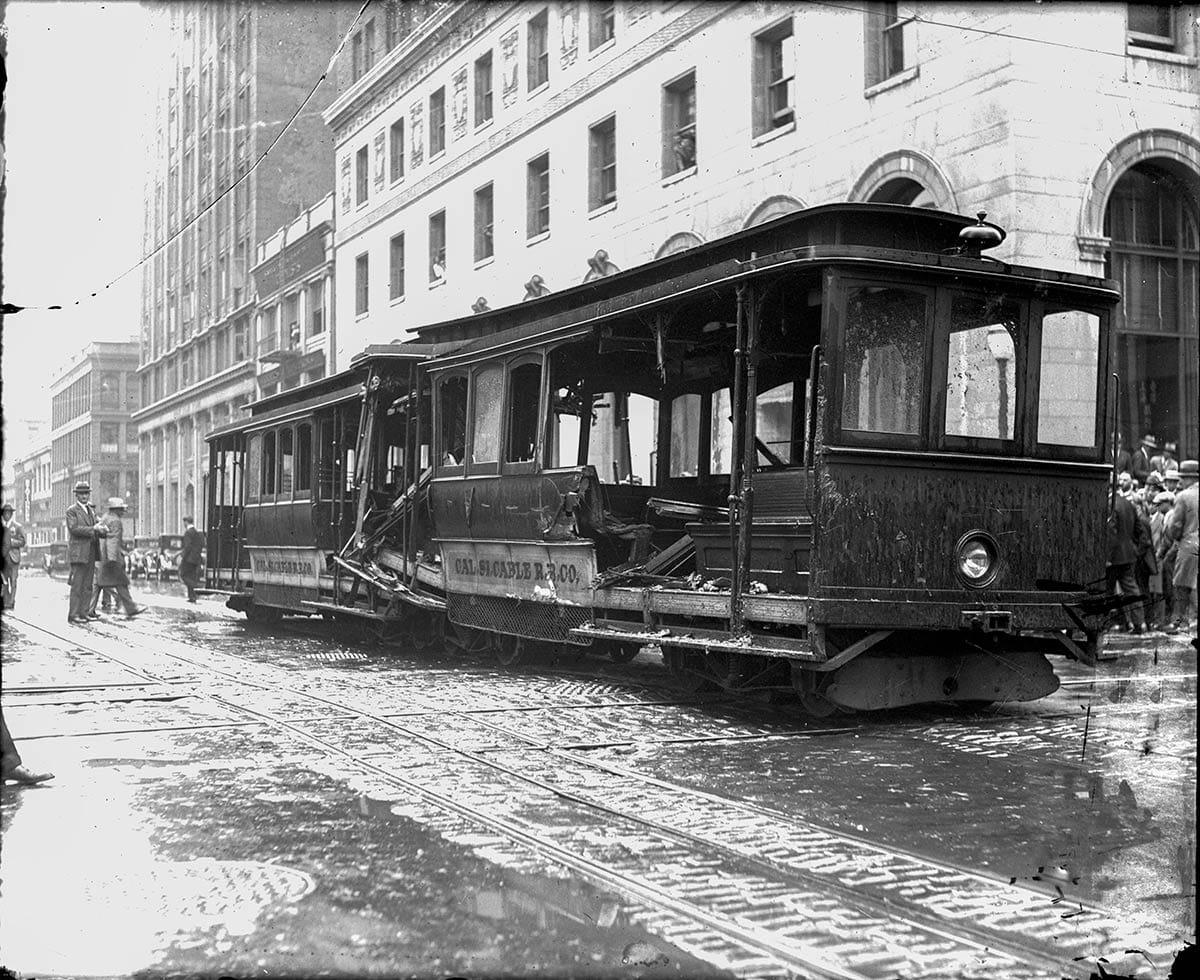
Up the hill, California Street “was strewn with bleeding and unconscious men, women, and girls,” those who had jumped or fallen from the runaway car, “and for the most part lay where they fell, badly injured.”
More than a hundred people suffered, some seriously. Three passengers and the driver of the meat truck suffered fractured skulls. There were broken and crushed limbs, cracked pelvises, concussions, and innumerable cuts and bruises.
It was the worst accident in San Francisco cable car history.
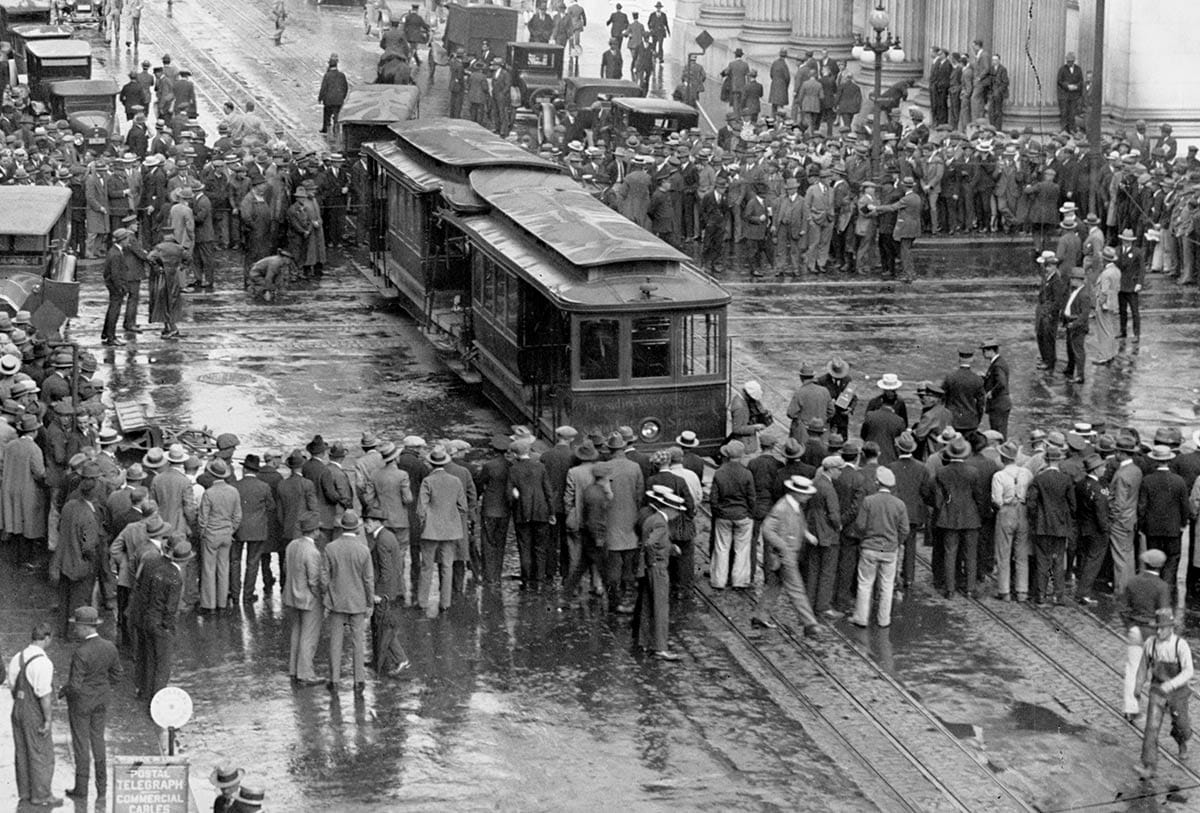
A crowd of thousands formed around the scene as fire fighters chopped away at the wreckage to free passengers.
The Chronicle reported that “‘ambulance chasers’ were in evidence soon after the accident, seeking among the injured, clients who might bring damage suits against the street car company.”
A cameraman from the International Newsreel company was Johnny-on-the-spot, getting footage of the accident’s aftermath that was shown at the Cameo, Warfield, and California theaters that same evening.
Gripman Navarro was at first hailed as a cool-headed hero who stuck to his post. A day after, however, Joseph W. Harris, president of the California Street Cable Railroad Company, blamed him for not using another brake and possibly having the cable still engaged. “It goes without saying that if he is found to have been responsible, he will be discharged.”
Harris also said the company was willing to pay for victims’ hospital bills “unless demands were exorbitant.”
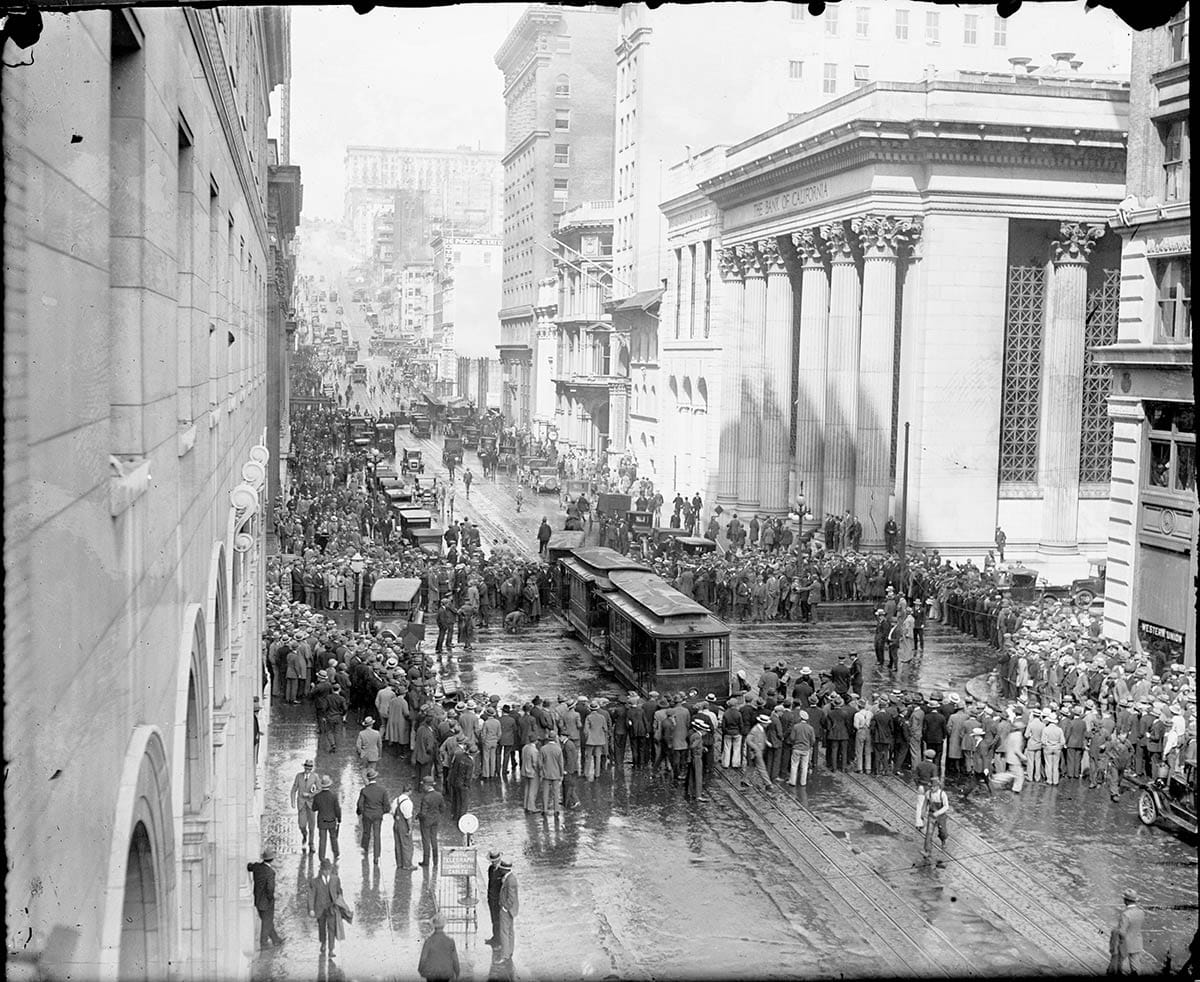
Miss Alice Gilbride, who first heard the ominous mumbling from Navarro about “These brakes,” found herself lying on the pavement of Montgomery Street after the crash.
Badly bruised, her clothes ripped, having been showered with animal gore, she got up and went to work.
A coworker convinced her perhaps this would be a good day to take some time off. She was back home at 1492 California Street in the afternoon talking to reporters.
“It was certainly a wild ride,” she told them.
Woody Beer and Coffee Fund
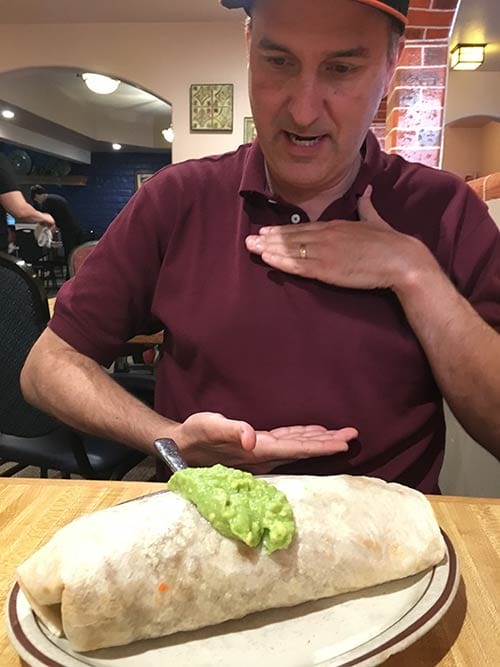
While beer, coffee, and good conversation are the targeted needs of the Woody Beverage Fund, maybe you’d like something to eat as well? We can probably accommodate you. Let me know when you’re free and thanks to those who have contributed to my sociability!
Sources
“3 Dying, 75 Hurt in Crash of Runaway Cable Cars,” San Francisco Bulletin, May 7, 1926, pg. 1.
“‘Bill’ Larue Big Hero, Stays for Crash Finish,” San Francisco Bulletin, May 7, 1926, pg. 2.
“Hundred Hurt in Cable Runaway,” San Francisco Chronicle, May 8, 1926, pg. 1.
“Doctor Grabs, Saves Woman in Plunge to Certain Death,” San Francisco Chronicle, May 8, 1926, pg. 4.
“Movies of Cable Crash Shown at S. F. Theaters,” San Francisco Examiner, May 8, 1926, pg. 8.
“Car Crash Blamed to Gripman,” San Francisco Bulletin, May 8, 1926, pg. 1.
“106 Hurt in Car Crash; Gripman Held,” San Francisco Examiner, May 8, 1926, pg. 1.
“Girl Dodges Death at Gripman’s Side,” San Francisco Chronicle, May 8, 1926, pg. 5.
“Injured Girl Tells of Crash,” San Francisco Examiner, May 8, 1926, pg. 9.

